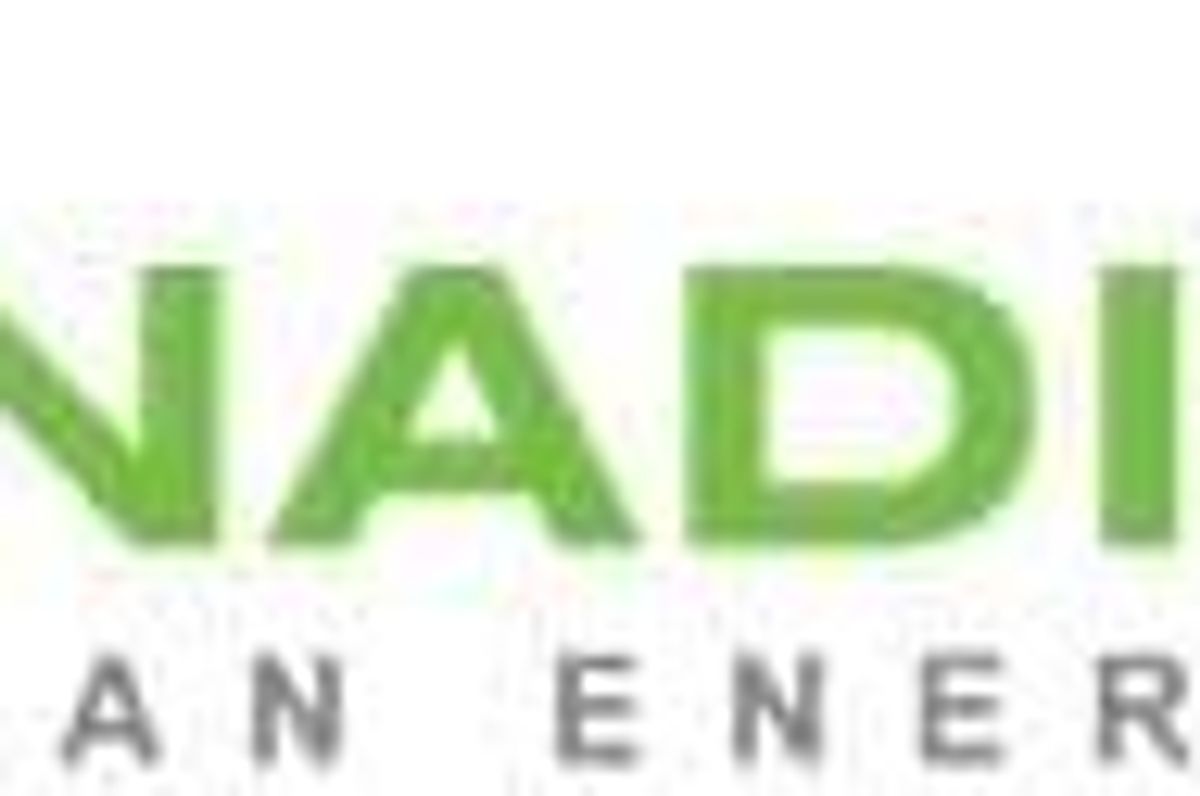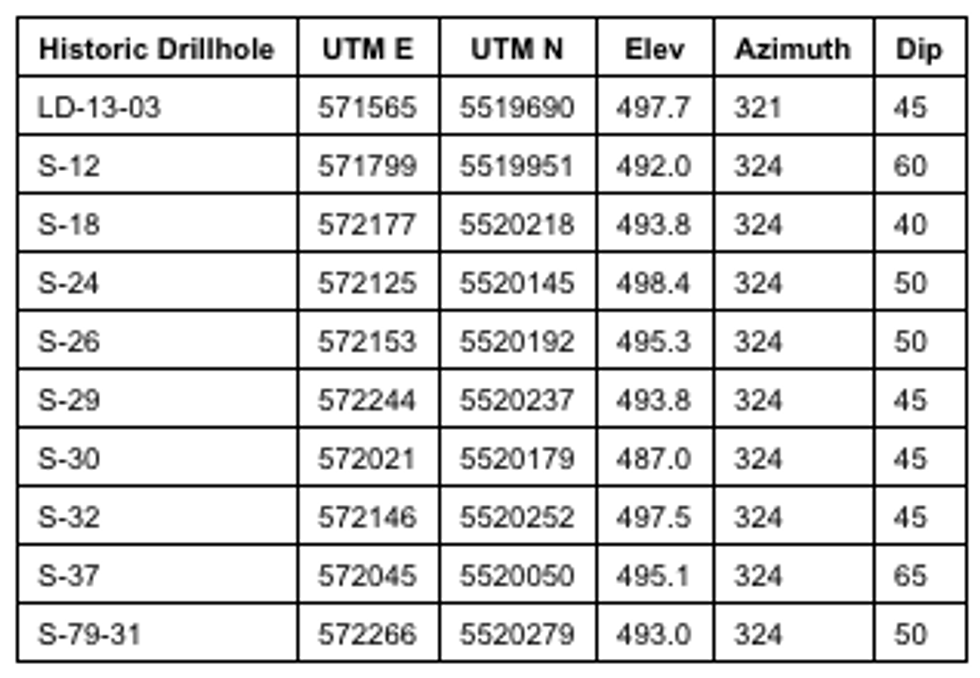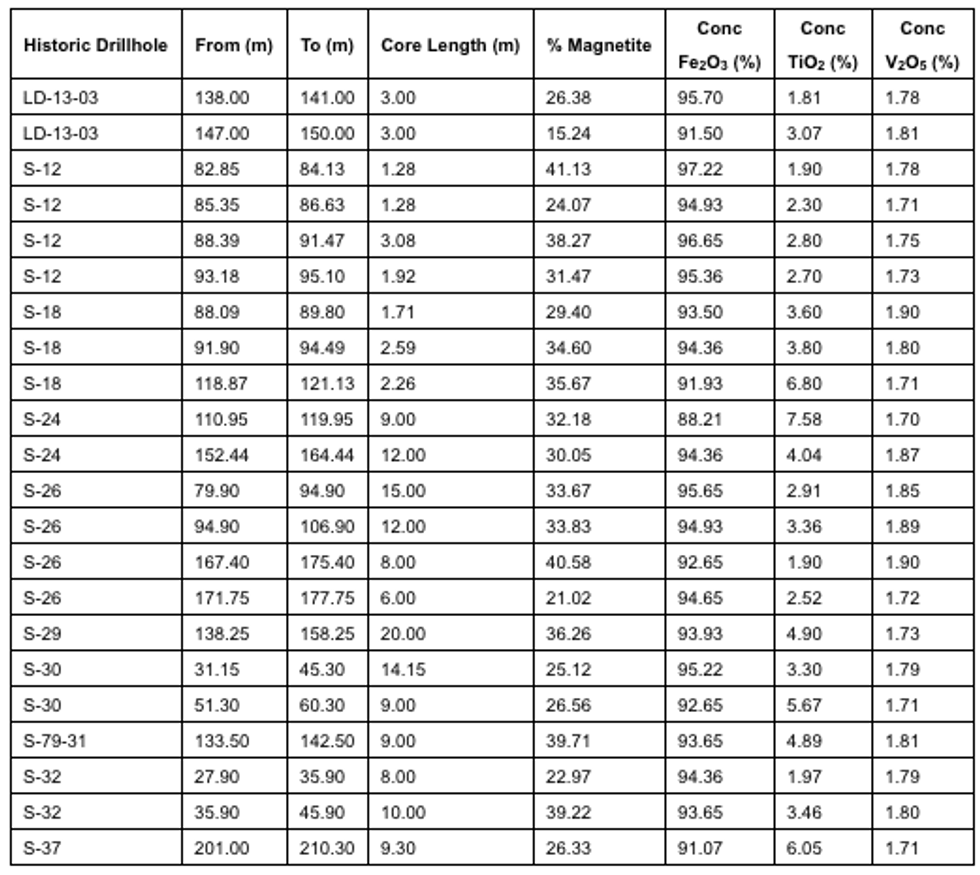
VanadiumCorp is pleased to report that the 8,500 m infill and extension drilling program currently underway has passed the 50 % completed mark.
VanadiumCorp Resource Inc. (TSXV:VRB) (“VanadiumCorp” or the “Company”), further to its news release dated September 3, 2019, is pleased to report that the 8,500 m infill and extension drilling program currently underway at the Company’s wholly owned Lac Doré Vanadium Project has passed the 50 % completed mark. The company is also pleased to report that a review of historic drill data by mining industry consultants CSA Global Consultants Canada Ltd. (CSA Global) of Vancouver has outlined the potential for elevated V2O5grades* in two of the three stratigraphic units that host vanadiferous titanomagnetite (VTM) mineralization.
Highlights
- 16 holes completed to date for a total of 4,346 m of drilling, including:
- 13 holes drilled to map the continuity of VTM mineralization between historic holes (3,722 m)
- 2 holes drilled to test the extensions of VTM mineralization to the northeast of the Lac Doré Vanadium project (402 m)
- 1 hole which is drilled as a twin of a historic hole (222 m)
- Banded semi-massive to massive titanomagnetite mineralization observed in all drill holes
- Potential for elevated V2O5 grades in the P1 stratigraphic unit and in the lower parts of the P2 unit, both of which contain moderate magnetite grades relative to the upper part of the P2 unit which hosts the main bands of massive to semi-massive vanadium bearing magnetite.
* Elevated vanadium grades are defined as > 1.7 % V2O5 in magnetite concentrate obtained by Davis Tube testing.
Adriaan Bakker, President and CEO of VanadiumCorp states: “With 4,346 m now drilled, the 8,500 m drill program should be completed on schedule, in less than 4 weeks. We are also excited by the results of the reprocessing of historic drill data which indicates potential for elevated V2O5 grades* in two previously overlooked stratigraphic units intercepted by drilling, the P1 and lower P2 units. The targeting of new zones of elevated vanadium content in magnetite below the main VTM bearing zones could potentially prove important for future processing options and project economics.”
The Lac Doré Vanadium project is located 27 km east-southeast from the city of Chibougamau in Eeyou Istchee James Bay Territory, Northern Québec. The drill program targets the Company’s Lac Doré Main Vanadium prospect where historic drilling and outcrop channel sampling conducted between 1958 and 2013 have revealed the presence of a 2 km-long by 200 m wide and at least 200 m deep zone of banded VTM mineralization within property limits.
At Lac Doré, the geology has historically been subdivided into four stratigraphic units, namely, from bottom to top, the P0, P1, P2 and P3 units. This subdivision is based largely on connecting continuous zones of magnetite that can be correlated laterally along strike.
The exploration program at the Lac Doré Vanadium property has been designed by the Company with the aid of mining industry consultants CSA Global of Vancouver and InnovExplo of Val-d’Or, Québec. The drill program is being managed by InnovExplo, under the supervision of the Table jamésienne de Concertation Minière of Chibougamau, Québec. The drilling is being carried out by Miikan Drilling Ltd. of Chibougamau. InnovExplo is also in charge of core logging and core sampling which are being carried out in Chibougamau. All core samples will be sent for assaying and for selective Davis Tube testing to SGS Canada Laboratories in Val-d’Or, Québec an independent ISO 90001:2015 accredited laboratory facility. The results of the drilling program will be disclosed once received and validated by the Qualified Person. Details of the metallurgical test work program will be finalized following the assessment of the drilling results.
Strict QA/QC protocols designed by InnovExplo and CSA Global will be implemented to ensure the assay results are relevant, reliable and in accordance with industry standards, CIM Mineral Exploration Best Practice Guidelines (CIM Exploration Guidelines, 2018) and National Instrument 43-101 – Standards of Disclosure for Mineral Projects (NI 43-101) disclosure requirements. All new and historical drill hole collars will be surveyed by a professional surveyor at the end of the drill program. A Lidar survey will be performed during the fall to obtain a high-resolution 3D image of the property’s topography.
The QAQC Protocol is as follows:
- Minimum 5% appropriate VTM standards to be inserted into the sample stream (i.e. 1 standard per 20 samples);
- Minimum 5% blanks to be inserted into the sample stream;
- All coarse rejects and pulps to be collected from the laboratory
- 5% of pulps to be resubmitted to SGS in later batches as duplicates with new sample numbers
- 5% of pulps to be submitted to an umpire laboratory
Analysis and Validation of Historical Drill and Outcrop Channel Sampling Data
With the objective of preparing the dataset for a future Mineral Resource Estimate, additional validation and verification of historic data will be carried out over the next weeks as part of the current program in order to ensure that the project data is in accordance with CIM Exploration Guidelines (2018), CIM Definition Standards on Mineral Resources and Reserves (CIM Definition Standards, 2014) and NI 43-101 disclosure requirements. This work will include the resampling of channel samples in historical trenches, the surveying of historical drill holes collars where they can be located, along with the resampling of select core from historical drill holes still available. The same assaying and QA/QC protocols used in the current drilling will be used for the re-assaying of historical holes and outcrop channels.
Metallurgical Testing
Following logging and sampling of the drill core, VTM mineralized intersections will be tested using a combination of major and trace element assays, size-grading analysis, Davis Tube testing and other magnetic tests to assess the head grades and concentrate grades for vanadium, titanium and iron, as well as magnetite content and magnetite proportions relative to ilmenite. More details on this program will be presented when the analytical results are received and disclosed.
Note on Historical Vanadium Grades in Magnetite
The identification of magnetite concentrates with grades >1.7% V2O5 in several historic drill holes (Table 1 and Table 2) suggests the potential for elevated vanadium grades in magnetite from the P1 unit or the lower parts of the P2 unit, both of which contain moderate magnetite contents (15-40% magnetite). In typical layered magmatic magnetite deposits, stratigraphically lower units contain higher concentrations of vanadium in magnetite, with the vanadium content in magnetite decreasing and titanium content moving upward in the stratigraphy. This pattern is seen in results from previous drilling. The samples with elevated V2O5 contents generally do not contain magnetite concentrations as rich as the massive accumulations found in the upper part of the P2 and in the P3 units and have therefore not been the focus of previous exploration efforts on the property. However, the identification of areas with elevated concentrations of vanadium in magnetite could potentially prove important for future processing options and project economics.
Table 1: Historical drill hole collar information (coordinates are NAD83 Zone 18)
Table 2: Samples** from historic drilling with V2O5 grades in magnetite concentrates of >1.7% V2O5, and magnetite concentrations of >20%.
Note: Thicknesses presented are drill core length. True thicknesses are estimated to be approximately 80% of core length.
The historical samples and assays for drill holes with prefix “S-” in Table 2 were completed by previous operators SOQUEM on the Property. Sample preparation and analytical techniques employed by previous operators SOQUEM are as follows: BQ size diamond drill core was split using a core splitter, milled to a size of 150 µm, concentrated using a Davis Tube at 1000 Gauss. Concentrates were assayed by Chimitec using Atomic Absorption spectroscopy.
For samples from drill hole LD-13-03 (drilled by the Company in 2013), NQ drill core was split with a diamond saw, and samples were milled to a size of and concentrated by IOS Services Géoscientifiques using a Davis Tube at 1000 Gauss. Concentrates were assayed by COREM using XRF on fused borate glass beads.
No details regarding Quality Assurance and Quality Control have been reviewed, and the Qualified Person has not verified the data disclosed as holes drilled by SOQUEM are no longer available, and samples from drill hole LD-13-03 have not yet been re-assayed. For this reason, it is the Company’s opinion that historic analytical results should be viewed for historical reference only and should not be relied upon.
The Company notes that as part of its current drill program, it will be surveying historical drill hole collar locations where possible and resampling select archived core from available historical drill holes as well as resampling historical trenches in order to verify the historical data. The same assaying and QA/QC protocols used in the current drilling program will be used for the re-assaying of historical core.
Mineral Resource Estimate
Conditional to the success of the summer-fall 2019 exploration program at Lac Doré, the Company aims to use the results of the drilling and trench resampling to prepare a Mineral Resource Estimate for the Lac Doré Vanadium Project in accordance with NI 43-101.
Qualified Persons
The scientific and technical information on the current exploration programme and validation work in this release has been prepared, reviewed and approved by Mr. Carl Pelletier, B.Sc., P.Geo. (OGQ) from InnovExplo and the scientific and technical information on historical data in this release has been prepared, reviewed and approved by Mr. Luke Longridge from CSA Global both consultant to the Company and Independent Qualified Person under National Instrument 43-101 – Standards of Disclosure for Mineral Projects.
About VanadiumCorp Resource Inc.
VanadiumCorp is developing dedicated vanadium supply and disruptive vanadium technologies for energy storage with a 100% green mandate. VanadiumCorp also holds a significant vanadium-titanium-iron bearing resource base in mining friendly Quebec, Canada including the 100% owned Lac Doré Vanadium Project adjacent to Blackrock Metals Inc. and the 100% owned Iron-T Vanadium Project near the Glencore (Bracemac-McLeod) Matagami Copper-Zinc Mine.
On behalf of the board of VanadiumCorp:
Adriaan Bakker
President and Chief Executive Officer
Neither the TSX Venture Exchange nor its Regulation Services Provider (as that term is defined in the policies of the TSX Venture Exchange) accepts responsibility for the adequacy or accuracy of this release.
Cautionary & Forward-Looking Statements
This release contains forward-looking statements. All statements other than statements of present or historical fact are forward-looking statements, including statements with respect to the anticipated use of Private Placement proceeds and anticipated receipt of final TSX Venture Exchange acceptance for the Private Placement. Forward-looking statements include words or expressions such as “will”, “subject to”, “expect” and other similar words or expressions. Factors that could cause future results or events to differ materially from current expectations expressed or implied by the forward-looking statements include general business, economic, competitive, political and social uncertainties; the state of capital markets and risks that may impact the Company’s business, operations and financial condition. Although the Company believes that the expectations reflected in these forward-looking statements are reasonable, undue reliance should not be placed on them because the Company can give no assurance that they will prove to be correct. Since forward-looking statements address future events and conditions, by their very nature they involve inherent risks and uncertainties. Additional information on these and other factors that could affect the Company’s operations and financial results are included in reports on file with Canadian securities regulatory authorities and may be accessed through the SEDAR website (www.sedar.com). We disclaim any obligation to update or revise these forward-looking statements, except as required by applicable law.
Click here to connect with VanadiumCorp Resource Inc (TSX:VRB) for an Investor Presentation.

